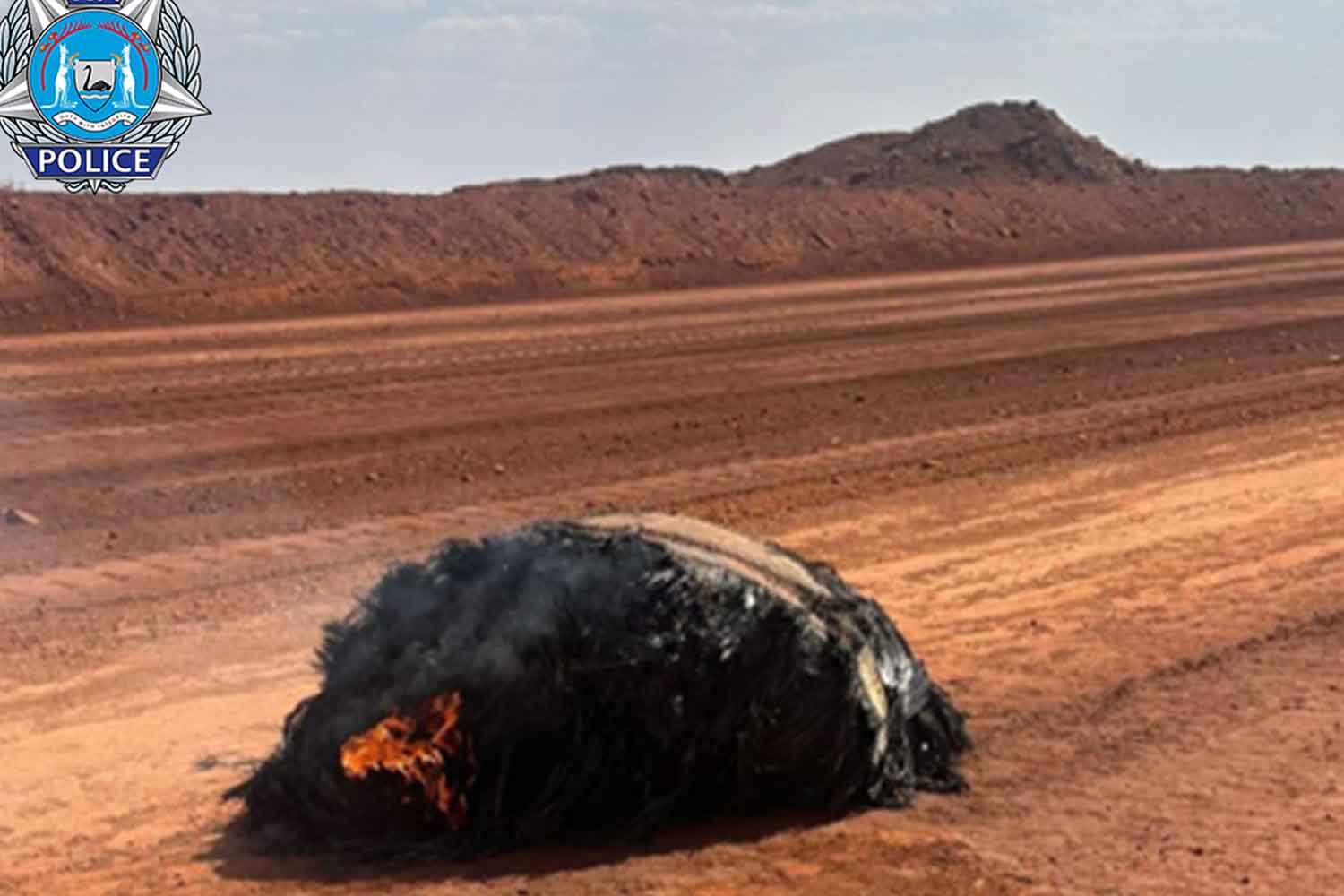Metal and carbon fiber object crashes in Australia's Pilbara desert. Experts suspect it's debris from a Chinese rocket that fell from space.

That discovery in the Australian desert is a new wake-up call on a topic still rarely discussed: space junk. Today, more than 130 million fragments orbit around Earth, according to European Space Agency estimates. Most are tiny, but there are also large objects, such as rocket stages, decommissioned satellites, and old probes.
In theory, all spacecraft should be designed for a controlled re-entry, toward a remote area of the Pacific Ocean called Point Nemo, the official “space graveyard.” In practice, not all launchers follow the same rules: some remain in orbit until gravity pulls them back, often without control.
And when this happens, they don’t necessarily fall into the ocean. In 2022, fragments of a Chinese Long March 5B rocket ended up in Malaysia and the Philippines. Now, in 2025, it’s Australia’s turn.
A silent threat to the environment too
The problem isn’t just about safety, but also environmental impact. Many space debris contain toxic materials like hydrazine and ammonia, or composite fibers and resistant metals that don’t degrade easily, as explained by an Australian Space Agency technician:
Every piece that re-enters is a potential contaminant. It’s not just iron falling from the sky: often these are pressurized tanks that can release chemical residues.
In the Australian case, the risk was minimal: the Pilbara area is sparsely populated and lacks vegetation. But in a different context — near a populated center or in a forested area — the impact could have caused fires or dangerous emissions. Today, most space missions involve private companies and new national agencies. But the management of “post-launch” remains a gray area, regulated by outdated agreements.
The European Space Agency and NASA are developing protocols to design more “eco-friendly” rockets, capable of self-destructing safely. However, many countries don’t apply the same rules, and every new rocket in orbit is a potential debris in free fall.
The object is now in custody and poses no danger
The Western Australia Police confirmed that the object has been secured. The Australian Space Agency has launched an investigation in collaboration with the ESA and NASA to determine with certainty the fragment’s origin.
Meanwhile, Newman residents say they’re still surprised, as a local miner told ABC News:
We heard a roar in the sky, then an orange light and the ground shaking. We thought it was a meteorite.
In reality, it was a reminder of our own progress coming back to knock on the planet’s door. This episode shows how space is no longer “out there,” but a concrete part of our ecosystem.
Every launch, every satellite, every fragment is a piece of history that, sooner or later, comes back down. And while we look to the sky dreaming of Mars, we should perhaps start thinking about how to stop littering Earth with wreckage.
WA Police Force is leading a multi-agency response after suspected space debris was found burning at a mine site ~30km…
Posted by Pilbara District – WA Police Force on Saturday, October 18, 2025
